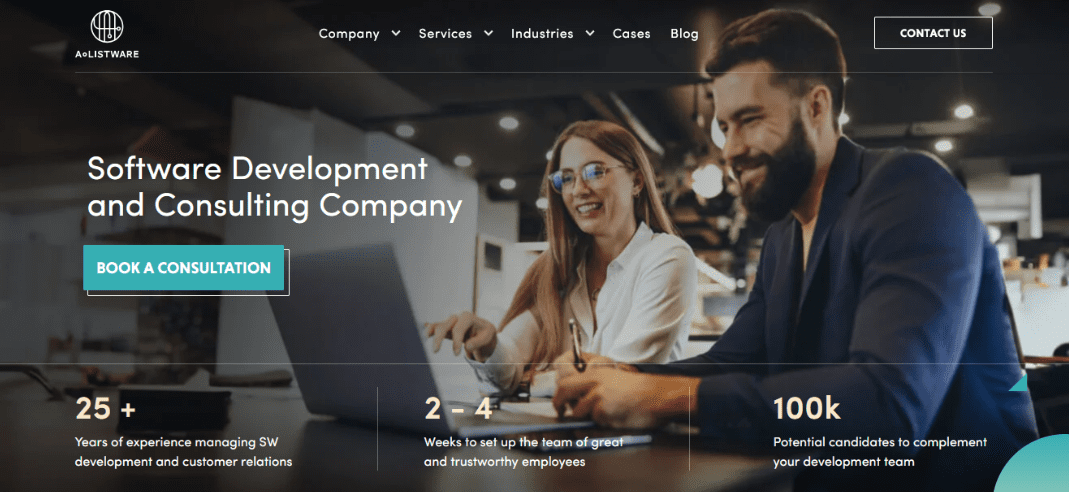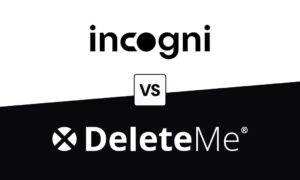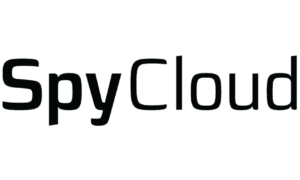In the UK, cybersecurity is now about day-to-day operations, not box-ticking. Consulting turns risk into action: strategy, architecture, testing, response. This article reviews leading firms in the cybersecurity consulting companies in the United Kingdom segment.
How to choose a partner: verify sector fit and tech stack, mature IAM and data protection, coverage for cloud and OT, disciplined testing and MDR, clear metrics and transparent SLA. Look for sequenced delivery, escalation paths, change logs, and post-incident learning. That is what cuts noise and speeds recovery.
The outlook is clear: more automation, higher signal quality, and tighter integration with IT processes. A consultant’s role is to shape a maintainable defense, not to push tools. Our goal is a calm starting point for comparison, so you can pick a team that makes risk manageable.
1. A-Listware
A-listware leads with practical cybersecurity consulting that blends strategy, design, and hands-on delivery. The firm maps real risks to control decisions that can live in production, not just on paper. Identity models come first more often than not, with clear governance, access patterns, and privileged workflows that fit how staff actually work. Data protection follows close behind, from classification and retention logic to encryption choices that do not slow operations. Cloud posture is treated as a program, not a one-time scan, with reference architectures, baseline configurations, and guardrails for deployment.
Testing is integrated early to challenge assumptions, using threat modeling, architecture reviews, and targeted attack simulations so gaps surface before rollout. Incident readiness is rehearsed, with playbooks, roles, and escalation paths kept simple enough to use when pressure spikes. Notably, A-listware provides cybersecurity consulting in the United Kingdom and supports customers in the United Kingdom, adapting sequencing to local regulatory expectations and to the pace of ongoing IT change. Quiet craft, steady outcomes, fewer surprises.
Key Highlights:
- Strategy translated into maintainable reference designs
- Identity and data protection treated as structural, not add-ons
- Assurance activities baked in to validate decisions
- Response planning tied to real teams and real constraints
Services:
- Risk assessment with operating model and roadmap
- Identity governance, access control patterns, and privileged access setup
- Cloud security architecture, configuration hardening, and posture uplift
- Data protection consulting with classification, retention, and encryption practices
- Security architecture review, threat modeling, and red team support
- Detection content design, SIEM tuning, and automation for faster triage
- Incident readiness, tabletop exercises, and post-incident improvement
Contact Information:
- Website: a-listware.com
- Email: info@a-listware.com
- Facebook: www.facebook.com/alistware
- LinkedIn: www.linkedin.com/company/a-listware
- Address: St. Leonards-On-Sea, TN37 7TA, UK
- Phone Number: +44 (0)142 439 01 40
2. NCC Group
NCC Group operates as a broad cybersecurity partner that blends advisory work with hands-on delivery. The firm tackles exposure across strategy, risk, and compliance while keeping a strong technical spine in testing, incident response, and managed detection. Identity and access management sits close to the center of its consulting, alongside cloud, OT, and application security, so programs do not live only on paper. When incidents hit, response and recovery teams step in, then loop insights back into improvements so the next breach is harder to pull off. Clients also lean on vulnerability management, external attack surface monitoring, and threat intelligence to keep day-to-day risk visible and actionable. It’s a practical mix of board-level direction and engineering work that lands inside real environments.
Why they stand out:
- Advisory linked to delivery across strategy, testing, and operations
- Identity and access programs aligned to zero trust initiatives
- Threat intelligence and attack surface monitoring feeding continuous improvement
- Incident readiness, response, and recovery bridging consulting with execution
Core offerings:
- Risk and compliance assessments with program roadmaps
- Identity and access design and implementation
- Cloud, application, and OT security consulting
- Penetration testing and attack simulation
- Threat intelligence, vulnerability management, and external exposure review
- Incident response and recovery support
3. Bridewell
Bridewell focuses on cybersecurity consulting that spans governance and architecture through to testing and managed detection. The team works across on-premise, cloud, and operational technology estates, shaping control frameworks, assessing posture, and building roadmaps that make sense for real business change. Penetration testing and red team exercises pressure test those decisions, while SOC and DFIR capabilities keep watch when things get noisy. The overall feel is joined-up consulting that carries through to operations.
Privacy and data governance sit in the mix as well, from GDPR gap analysis to ISO-aligned maturity work. Microsoft-centric services add another layer for enterprises standardizing their stack. Organizations use Bridewell to align strategy and daily practice without turning the entire estate upside down overnight. Steady steps, measurable outcomes, fewer surprises.
What they’re good at:
- Consulting that covers cloud, OT, and enterprise platforms
- Security architecture, audits, and program maturation
- Penetration testing across web, mobile, wireless, and social engineering
Services include:
- Cyber risk assessment and control framework development
- Security architecture and cloud posture reviews
- Penetration testing and red team assessments
- SOC operations, SIEM engineering, and MDR
- Data privacy consulting with GDPR and ISO alignment
- Digital forensics and incident response
4. PwC
PwC delivers cybersecurity consulting that pairs board-level advisory with deep implementation. Work often starts with strategy and target operating models, then moves into operating procedures, controls, and the mechanics of transformation. Clients use the team to benchmark capability, understand exposure, and stand up programs that steadily reduce risk rather than chase every new tool. When incidents occur, response specialists help contain, learn, and rebuild in a more resilient shape.
Design and delivery services cover detection engineering, continuous tuning, and the plumbing that keeps signals reliable. Threat intelligence is not a slogan here but a subscription service that feeds decisions with tactical and strategic data. Managed cyber services round out the picture for organizations that want reporting on demand and defenses that operate around the clock. The outcome is not just a binder of policies but capabilities that run.
Identity and access management, cloud, and OT security show up frequently in engagements, since those are the places where risk concentrates and where transformation can stall. The firm’s role is to translate goals into sequencing, funding, and architecture that people can actually maintain. It reads a bit like program management, a bit like engineering, and a bit like coaching, which is why it tends to stick.
Why people choose them:
- Strategy and operating model work tied to delivery
- Risk frameworks, regulatory alignment, and measurable outcomes
- Incident response that folds lessons into transformation
- Blend of advisory, engineering, and managed cyber services
Their focus areas:
- Cyber strategy, target operating model, and policy development
- Capability assessments, transformation planning, and program mobilization
- Threat detection design, tuning, and resilience engineering
- Incident investigation, recovery planning, and crisis support
- Threat intelligence subscriptions and decision support
- Managed reporting, exposure tracking, and user protection services
5. Deloitte
Deloitte runs a broad security practice that pairs strategic guidance with day-to-day problem solving. The consulting work spans risk assessment, control design, and operating model setup, then moves into the mechanics of identity, cloud, and application protection. Testing and validation play a steady role, so programs do not remain theoretical. Incident readiness and response are part of the cycle, feeding lessons back into governance and engineering. Threat modeling, vulnerability management, and exposure monitoring help teams see what matters first. The overall approach reads as structured, practical, and grounded in delivery.
Highlights:
- Advisory tied to implementation across identity, cloud, and apps
- Risk programs anchored in assessment, control mapping, and roadmaps
- Incident readiness with feedback loops into governance and build work
Core offerings:
- Risk assessment and maturity reviews
- Identity and access strategy, design, and rollout
- Cloud security architecture and configuration baselines
- Application security consulting with testing and secure development guidance
- Threat detection uplift and response playbook development
- Vulnerability management and attack surface reviews
6. EY
EY treats cybersecurity consulting as an end-to-end discipline that mixes board-level direction with technical depth. Engagements often begin with capability assessments and target operating models, then shift into process design, control selection, and measurable change. Identity, data protection, and cloud security sit close to the center of delivery. Program management keeps the pace realistic and the sequencing clear.
Testing and validation support the strategy. Penetration exercises, red teaming, and architecture reviews show where controls bend or fail. Detection engineering, response planning, and resilience work round out the picture, so teams know how to react and recover. The result is a program that can be maintained without chasing every new tool.
Standout qualities:
- Governance and operating model work backed by technical execution
- Data protection and identity controls embedded in everyday processes
- Testing and red teaming used to verify design choices
- Resilience planning that links crisis handling with long-term improvement
Services include:
- Capability assessments and security strategy
- Data protection consulting with classification and DLP design
- Identity and access transformation with governance integration
- Cloud security reviews and reference architectures
- Penetration testing, red teaming, and architectural assurance
- Detection engineering, incident response planning, and resilience uplift
7. KPMG
KPMG approaches cybersecurity consulting with a focus on clarity, sequencing, and measurable outcomes. Work typically starts by mapping risk to business objectives, then translating that map into policies, procedures, and control sets. Identity, third-party risk, and cloud posture receive consistent attention because those areas drive much of today’s exposure. Delivery teams aim to make changes that stick, not just slide decks.
Testing is used as a feedback tool. Penetration testing, configuration reviews, and scenario exercises highlight weak points before incidents do. Findings flow into remediation plans and budget-aware roadmaps. The process is iterative and keeps stakeholders aligned.
Operations are not left behind. Detection and response design, SIEM tuning, and playbook development help reduce noise and shorten time to action. Post-incident reviews close the loop, updating governance and architecture so the same issue is less likely to repeat. Quiet, steady hardening over time.
Why people choose this team:
- Risk translation into practical control design and operating procedures
- Attention to identity, third-party exposure, and cloud baselines
- Testing used to validate and prioritize remediation
- Operational guidance that improves detection and response
Focus areas:
- Risk and control framework development with program management
- Identity governance, access models, and privileged access design
- Third-party and supply chain risk assessments with continuous monitoring
- Cloud security posture reviews and hardening
- Penetration testing, configuration assurance, and tabletop exercises
- Detection strategy, response playbooks, and post-incident improvement
8. Accenture
Accenture provides cybersecurity consulting that links strategy to implementation, with work that moves from risk discovery to everyday controls. The advisory side frames operating models, governance, and priorities, then the build teams handle identity, cloud baselines, and application security so guidance does not sit still. Testing and validation help confirm design choices, while playbooks and runbooks keep response work practical. Threat modeling, continuous exposure reviews, and program metrics give stakeholders a clear view of progress. Partners and platforms are used where useful, but the emphasis stays on outcomes that can be supported long term.
Why they stand out:
- Advisory joined to delivery across identity, cloud, and application layers
- Maturity assessments tied to roadmaps with measurable checkpoints
- Attack surface and vulnerability oversight feeding improvement cycles
- Incident readiness with response patterns that fold lessons back in
Services cover:
- Risk assessment and control design
- Identity governance, access models, and privileged access setup
- Cloud security reference architectures and configuration hardening
- Application security review, testing, and secure development guidance
- Threat detection uplift with use case design and tuning
- Incident response preparation and post-incident remediation planning
9. Capgemini
Capgemini approaches cybersecurity consulting as a structured program rather than a one-off report. Engagements often begin with capability reviews, target operating models, and policy refresh, then flow into technology decisions that suit existing estates. Identity, data protection, and cloud controls sit close to the center of the work. Testing and architecture assurance keep changes realistic and supportable.
Delivery teams focus on the plumbing that keeps signals reliable. Detection content, SIEM design, and playbooks are tuned to fit how operations actually run. Third-party risk and compliance alignment are addressed in parallel, so governance keeps pace with the technical uplift. The result reads as steady, sequenced improvement rather than a disruptive overhaul.
What they’re good at:
- Joined-up governance and architecture support
- Data protection embedded alongside identity and access practices
- Assurance activities that verify design and configuration decisions
Services include:
- Security strategy, capability assessment, and roadmap definition
- Identity lifecycle design with governance and access reviews
- Data protection consulting and classification patterns
- Cloud posture assessments and reference implementations
- Assurance services including penetration testing and architecture review
- Detection engineering, use case development, and response playbooks
10. IBM
IBM delivers cybersecurity consulting with a mix of advisory, engineering, and operations support. Work typically starts by mapping exposure to business objectives and identifying the control set that can be maintained over time. Identity, zero trust patterns, and data security often form the spine of the design. Architecture guidance is paired with practical build steps so progress is visible early.
Testing is not an afterthought. Red teaming, adversary simulation, and configuration review help validate assumptions before rollout. Findings are translated into remediation tasks, capacity planning, and budget-aware sequencing. That translation piece matters, because programs live or die on what happens after the workshop.
Operations receive dedicated attention. Detection engineering focuses on signal quality, not just more alerts. Response teams use rehearsed procedures, while post-incident reviews feed fresh requirements back into governance and architecture. Over time, this creates a loop where strategy and day-to-day practice actually inform each other.
Why people like them:
- Clear path from assessment to build and run
- Identity and data controls treated as core design elements
- Testing used to prioritize remediation instead of adding noise
- Operational guidance that shortens the distance from alert to action
Their focus areas:
- Risk and control framework development with program management
- Identity and access transformation with governance integration
- Data security design including classification and protection patterns
- Cloud and application security architecture with assurance activities
- Threat detection content, SIEM tuning, and automation design
- Incident response planning, tabletop exercises, and post-incident improvement
11. CGI
CGI frames cybersecurity consulting as a practical discipline that connects governance with the daily realities of IT and OT. The work starts with risk discovery and clear control mapping, then moves into identity, cloud posture, and application security so guidance turns into action. Testing is used as a feedback loop, with architecture reviews and attack simulations highlighting weak points before rollout. Response planning is not an afterthought, with playbooks, runbooks, and exercises that shorten time to decisions. Third-party exposure and regulatory alignment are handled in parallel, keeping procurement and compliance from drifting apart. Simple idea, steady execution.
Strengths:
- Advisory connected to delivery across identity, cloud, and applications
- Testing and architecture assurance used to validate design choices
- Third-party risk and regulatory alignment addressed alongside technical uplift
Core offerings:
- Risk assessment and control framework development
- Identity governance, access models, and privileged access design
- Cloud security posture reviews and reference architectures
- Application security consulting, secure development guidance, and validation
- Threat detection uplift with content design and tuning
- Incident response planning, exercises, and post-incident improvement
12. BDO
BDO treats cybersecurity consulting as a sequence of measured steps rather than a single report. Engagements often begin with capability assessments and operating model definition, then progress into policy refresh, process design, and control selection that fits existing environments. Identity and data protection sit near the center, supported by practical architecture patterns for cloud and on-premises stacks. The outcome is a roadmap that teams can follow without pausing core operations.
Validation underpins the plan. Penetration testing, configuration reviews, and tabletop exercises stress test assumptions, allowing remediation to be prioritized by impact. Detection and response design focus on signal quality, with playbooks tuned to how operations actually work. Quiet progress, fewer surprises, better handovers.
Why people choose them:
- Clear sequencing from assessment to build and run
- Identity and data controls integrated into everyday processes
- Testing used to verify and prioritize remediation
- Operational guidance that improves detection and response
Their services include:
- Capability assessments and security strategy roadmaps
- Identity lifecycle transformation with governance integration
- Data protection consulting, classification models, and DLP patterns
- Cloud posture assessments and architecture assurance
- Penetration testing, configuration validation, and resilience exercises
- Detection engineering, SIEM tuning, and response playbooks
13. Eviden
Eviden delivers cybersecurity consulting with an engineering-first posture, pairing strategy with the plumbing that keeps defenses reliable. Work typically starts by mapping risk to business objectives and translating that map into policies, procedures, and reference designs. Identity and zero trust patterns often anchor the build, with data security woven through architecture decisions. Progress is tracked through measurable checkpoints, not just documents.
Testing is part of design, not a late gate. Adversary simulation, red teaming, and configuration reviews surface gaps early, converting findings into budget-aware remediation and sequencing. This keeps programs realistic and aligned with available capacity. No noise for the sake of noise.
Operations matter. Detection engineering emphasizes use cases that reduce alert fatigue, while response planning focuses on speed and clarity during stressful moments. Post-incident reviews close the loop, feeding lessons back into governance and architecture so the same issues are less likely to repeat.
Standout qualities:
- Strategy expressed through maintainable reference architectures
- Identity and data protection used as structural elements of programs
- Testing and simulation embedded to validate assumptions
Services cover:
- Risk and control framework design with program management
- Identity and access transformation with privileged access models
- Data security architecture, classification schemes, and protection patterns
- Cloud and application security reviews with assurance activities
- Threat detection content development, SIEM orchestration, and automation design
- Incident response planning, exercises, and post-incident hardening
14. PA Consulting
PA Consulting runs cybersecurity consulting as a mix of strategy, design, and hands-on change. Work typically starts with risk discovery and a clear target operating model, then moves into identity patterns, data safeguards, and cloud controls that can be maintained. Architecture choices are validated with testing and threat modeling, not just slideware. Incident readiness and recovery are planned early, with procedures rehearsed and ownership mapped. Supply chain exposure, privacy obligations, and OT considerations are folded into the same program so controls do not drift. Quiet, structured, and engineered to stick.
Standout qualities:
- Strategy that translates into maintainable control sets
- Identity and data protections treated as core design elements
- Assurance activities used to verify architecture and configuration
Core offerings:
- Risk assessment with operating model and roadmap
- Identity governance and privileged access design
- Cloud security architecture and configuration hardening
- Data protection consulting with classification and retention patterns
- Security architecture review, threat modeling, and validation
- Incident readiness, tabletop exercises, and post-incident improvement
15. BT Business
BT Business approaches cybersecurity consulting through the lens of connectivity, operations, and resilience. Advisory teams map risk to practical control choices, then sequence change across identity, network, and cloud. Detection content is engineered for signal quality, not just volume, and procedures are written for teams that need clarity during pressure. Third-party exposure and regulatory alignment are kept in step with the technical uplift, so governance and operations move together.
Delivery includes testing and continuous assurance. Penetration exercises and configuration checks highlight gaps before rollout, while SOC integration and response routines shorten the distance from alert to action. Data protection receives steady attention alongside zero trust patterns and access governance. The emphasis sits on measurable outcomes and repeatable runbooks.
Key points:
- Consulting paired with operational integration and SOC practices
- Controls sequenced across identity, network, and cloud for realistic change
- Validation used to prioritize remediation and reduce noise
Service scope:
- Security strategy and capability assessment with roadmaps
- Identity access models, zero trust patterns, and privileged access controls
- Network and cloud security reference designs with configuration assurance
- Penetration testing, configuration validation, and resilience exercises
- Threat detection use case design, SIEM tuning, and automation
- Incident response planning, rehearsal, and coordinated recovery
Conclusion
The UK cybersecurity market is mature and practical. Consulting is not about slogans, but about clear guardrails, tested assumptions, and disciplined delivery. Architecture, identity, cloud, OT, and application security move together when decisions are tested and backed by usable response procedures. The core of vendor selection is fit to your risk and operating model. Look for advisory tied to delivery, for balanced IAM, for signal quality in detection, and for how test results turn into tasks and roadmaps. Ask about metrics, improvement loops, and who holds ownership after an incident.
It helps to start with a short diagnostic and a pilot. Small steps reveal where integration sticks, how the team tunes SIEM and playbooks, and whether timelines are realistic. Transparency in changes, versions, and manual steps saves weeks.






































